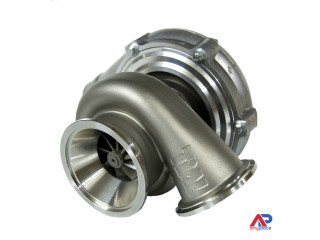Metal Oxide Varistor
2022-06-14 13:18 Phones & Tablets Sahāranpur 527 views Reference: 1108Location: Sahāranpur
Price: Contact us
A protective device that is used to protect the electrical power system from surges caused by lightning is known as surge arrester. It includes two terminals like high voltage and ground. Once an electric surge travels through the surge arrester from the power system, then a huge voltage current can travel to the insulation directly otherwise to the ground terminal to protect the system from damage.
Not all surge arresters protect systems from lightning. While lightning current arresters (Class 1) are used to protect against direct lightning surge currents, surge arresters (Class 2) protect equipment from induced surges in electrical wiring. Surge arresters and lightning current arresters from DEHN offer reliable protection against these hazards. And there are many kinds of surge arresters such as Distribution Surge Arrester, Station Surge Arrester, Line Surge Arrester, etc. Different surge arresters have to be equipped with different Metal Oxide Varistors like 5kA Varistor, 10kA Varitor, etc.
How Does a Surge Arrester Work?
The purpose of a surge arrestor is to protect insulation/components from high DV/DT that peak at instantaneous values that are in excess of the breakdown of the insulation or component. Lightning is one common cause of voltage surges. Another common cause is switching in an inductive circuit.
It is possible to capture the occurrence of a voltage surge. Some surge arresters are equipped with "surge counters" that capture the fact that the arrester has discharged current. It is also possible to use other phenomena (sound measurement, light measurement, electric field measurement, etc.) to capture the occurrence of a discharge. Meteorologists routinely capture and record lightning discharges using both ground-based and satellite-based instruments.
It is also possible to capture and record voltage surges, but here the technology gets complicated. A common issue is that a voltage surge is inherently a high-frequency phenomenon, and in order to capture and record (ie, quantify) the event, the measurement system must have a high-frequency response. The kind of instruments that are commonly applied for fundamental frequency voltage measurements don't have sufficient frequency response to accurately capture and record high-frequency voltage transients. They may be able to capture the occurrence of the event, but it is not always possible to accurately quantify the event using those devices.
A surge arrester is a device that protects electrical power systems from damages caused by lightning. A typical surge arrester has both a ground terminal and a high-voltage terminal. When a powerful electric surge travels from the power system to the surge arrester, the high voltage current is sent directly to the insulation or to the ground to avoid damaging the system.














